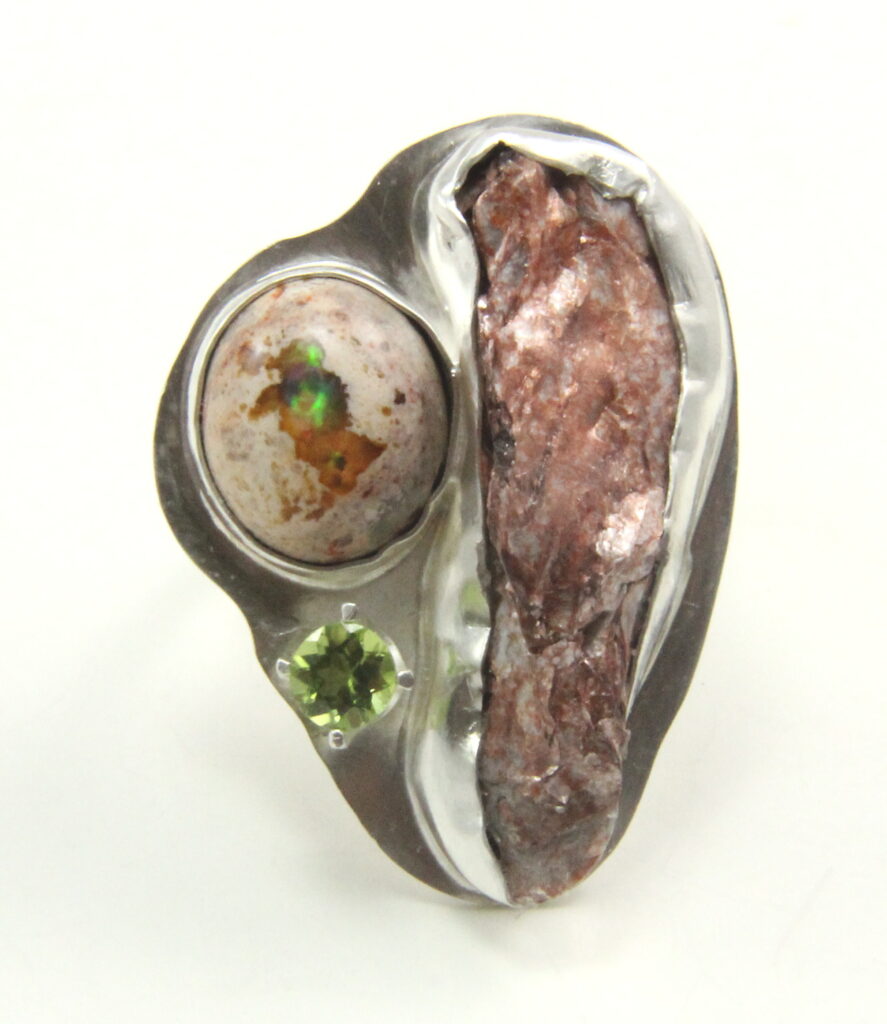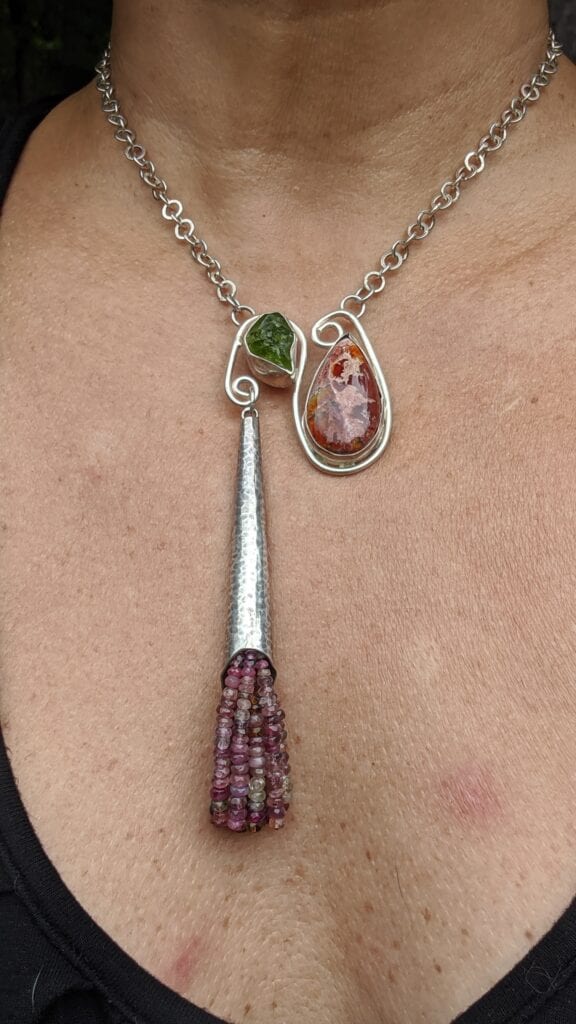Hiya!
I’m bummed! Every year I look forward to the various gem shows I attend. The G&LW show which happens a couple times a year in NC with the largest being in July was canceled then rescheduled for this week. Originally I wasn’t going to go because we were planning a trip to visit family and celebrate my mom’s 83 birthday. That has since been canceled. I was disappointed but I could now attend the G&LW gem show, only to be disappointed once again. Most of my favorite vendors are not attending, thus no reason for me to go see my favorites who won’t even be there! Yet one more disappointment COVID has brought on. I am setting my sights on attending the Tucson Gem & Mineral Show in February of 2021! Surely COVID will have come to pass by then. I’m not setting my hopes too high though!
Do you pronounce the T in peridot? I have always pronounce it pear-a-doe. I was curious though, what really is the correct pronunciation? After a bit of research, it seems both pronunciations are acceptable. The American pronunciation tends to be phe-ruh-daat whereas the British pronunciation is phe-ruh-dot. Most gem and jewelry tradesmen use “pear-a-doe,” and are quite adamant in calling the “dot” form as incorrect!
Peridot is the birthstone of August. Happy Birthday to you August babies, especially to my mom and brother! Peridot’s apple-green luster has been treasured for over 4,000 years. Peridot stretches back to ancient Egypt on the volcanic island of Zebargad in the Red Sea. It is the national gem of Egypt, and the ancient Egyptians knew it as the gem of the sun. Many historians believe that many of the emeralds that Cleopatra was so famous for wearing were actually peridot that were from the mines in Egypt. It is fabled that peridot were so treasured by the Egyptians that the location of the fog shrouded volcanic mines were a closely guarded secret. Since the island was difficult to navigate to, it became lost to antiquity and was only recently rediscovered in 1906. Since that time, after mining of peridot peaked in the late 1950’s, Zebargad’s peridot mines have been exhausted.

Today the largest sources of peridot are the United States, Myanmar, Pakistan and the Himalayas. Peridot was first mined in quantity in the U.S. in the area of Peridot, Arizona. The name of that town is pronounced “pear-a-dot.” Which may be the reason many people pronounce it “pear-a-dot!
Gem quality peridot is a yellowish-green transparent variety of olivine. Peridot is the pure green, to a yellow green or greenish-yellow crystal of the mineral olivine. It forms deep inside the earth and is brought to the surface through volcanic activity.
Peridot is said to alleviate jealousy, spite bitterness, hatred and greed! It can open ones’ heart to joy and new relationships while attracting love! Peridot is said to work as an antidepressant that protects you from negative energy while bolstering a sense of self-worth and motivation, enabling one to take responsibility for their own life.
Known as the stone of compassion, it is believed to bring good health, restful sleep, and peace protecting one from recurring nightmares about evil spirits, murders or sexual attacks!

Peridot’s cheerful green color stone is known to inspire creativity, and bring delight and good cheer. Who couldn’t use some of that right about now?

Until next time, stay safe, stay well!
ENJOY!!
